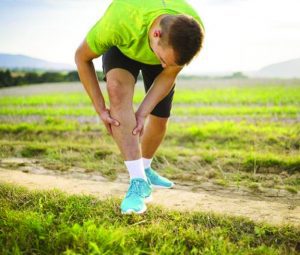Do you happen to have these symptoms?
• Painful cramping in your hip, thigh or calf muscles after certain activities, such as walking or climbing stairs (claudication)
• Leg numbness or weakness
• Coldness in your lower leg or foot, especially when compared with the other side
• Sores on your toes, feet or legs that won’t heal
• A change in the color of your legs
• Hair loss or slower hair growth on your feet and legs
• Slower growth of your toenails
• Shiny skin on your legs
• No pulse or a weak pulse in your legs or feet
• Erectile dysfunction in men


If peripheral artery disease progresses, pain may even occur when you’re at rest or when you’re lying down (ischemic rest pain). It may be intense enough to disrupt sleep. Hanging your legs over the edge of your bed or walking around your room may temporarily relieve the pain.
What are the causes and Risk factors?
Atherosclerosis is a process in which blood, fats such as cholesterol, and other substances build up on your artery walls. Eventually, deposits called plaques may form. The deposits may narrow — or block — your arteries. These plaques can also rupture, causing a blood clot.
Peripheral artery disease is often caused by atherosclerosis. In atherosclerosis, fatty deposits (plaques) build up in your artery walls and reduce blood flow.
Although the heart is usually the focus of discussion of atherosclerosis, this disease can and usually does affect arteries throughout your body. When it occurs in the arteries supplying blood to your limbs, it causes peripheral artery disease.
Risk factors of PAD
• Smoking
• Diabetes
• Obesity (a body mass index over 30)
• High blood pressure
• High cholesterol
• Increasing age, especially after reaching 50 years of age
• A family history of peripheral artery disease, heart disease or stroke
• High levels of homocysteine, a protein component that helps build and maintain tissue
People who smoke or have diabetes have the greatest risk of developing peripheral artery disease due to reduced blood flow.
When should I see my doctor?
If you have leg pain, numbness or other symptoms, don’t dismiss them as a normal part of aging. Call your doctor and make an appointment.
Even if you don’t have symptoms of peripheral artery disease, you may need to be screened if you are:
• Over age 70
• Over age 50 and have a history of diabetes or smoking
• Under age 50, but have diabetes and other peripheral artery disease risk factors, such as obesity or high blood pressure
While many people with peripheral artery disease have mild or no symptoms, some people have leg pain when walking (claudication). Claudication symptoms include muscle pain or cramping in your legs or arms that’s triggered by activity, such as walking, but disappears after a few minutes of rest. The location of the pain depends on the location of the clogged or narrowed artery. Calf pain is the most common location.
The Good News is RAVE can help
Our Physicians Dr. Craig Reiheld and Dr. Charles Gordon are able to provide an outpatient minimally invasive surgery that can have you in and out our facility within a few hours. Our state of the art outpatient surgical suite allows us to give you the best treatment option if you suffer with Peripheral Artery Disease (PAD).
If left untreated it could lead to:
• Critical limb ischemia. This condition begins as open sores that don’t heal, an injury, or an infection of your feet or legs. Critical limb ischemia occurs when such injuries or infections progress and can cause tissue death (gangrene), sometimes requiring amputation of the affected limb.
• Stroke and heart attack. The atherosclerosis that causes the signs and symptoms of peripheral artery disease isn’t limited to your legs. Fat deposits also build up in arteries supplying your heart and brain
If you feel that you have or have been diagnosed with PAD have your physicians set up a consultation with our Board Certified Interventional Radiologists to review your treatment options.
Radiology Associates of Venice & Inglewood
VENICE
512-516 S. Nokomis Ave
Venice, FL 34285
941-488-7781
Hours: 8:00am-5:00pm
ENGLEWOOD
900 Pine Street
Englewood, FL 34223
941-475-5471
Hours: 8:00am-5:00pm
SARASOTA
3501 Cattlemen Road
Sarasota, FL 34223
941-342-RAVE (7283)
Hours: 8:00am-5:00pm
 Southwest Florida's Health and Wellness Magazine Health and Wellness Articles
Southwest Florida's Health and Wellness Magazine Health and Wellness Articles

